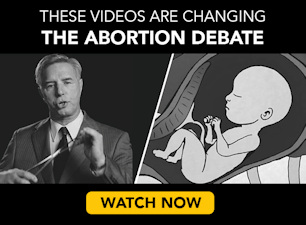In a pro-choice book of essays, Kimi Faxon Hemingway wrote about her experience with the abortion pill, which she refers to by its original name, RU-486.
The abortion pill, mifepristone, works by breaking down the uterine lining, starving the baby and causing it to die. Then a second drug, misoprostol, is given to start contractions that expel the dead baby. Former abortionist Dr. Anthony Levatino describes the procedure in the video below:
Hemingway was early in her pregnancy, and when she went to the abortion facility, the worker she spoke with recommended the drug. Hemingway was told that the abortion pill was the best method a woman could use in early pregnancy. She was told the drug w0uld make her feel “strong menstrual cramps” and that she would bleed for about four hours. The abortion counselor described the process as “organic, natural, almost like a miscarriage.” Hemingway believed the abortion would be easy.
But things did not go the way she expected.
Hemingway took the abortion pill with the baby’s father and her friend Heather there for moral support. She laughed with her friends at a romantic comedy and was in good spirits. But then, the horrific cramps and heavy bleeding started:
I was running to the bathroom in 10 minute intervals, soaking up thick pads, then screaming on the toilet while tissue, mucus, blood, [excrement], spilled out of me….
Heather helped me back to the couch. I felt wrung out, but it had only just begun. It was the last time that day that I made it to the toilet. The 5 feet between the couch and the bathroom seemed insurmountable, and when the convulsions, fever, and chills hit, my body thumped to the floor. I stayed there excreting fluids I did not know my body had onto the wood floor.
The ordeal did not end when Hemingway’s friends went home. The bleeding only got worse over the next few weeks.

Medical abortion
She repeatedly called the abortion facility, but they gave her the runaround. One week later, she was still bleeding heavily and passing large clots.
When Hemingway, traumatized and exhausted, finally went back to the abortion facility, the abortion workers found her plight amusing. She got no sympathy. The physician’s assistant who examined her laughed, “You sure are a bleeder, aren’t you?” Hemingway left the abortion facility in tears.
Three months went by. Hemingway was still “bleeding through my clothes [and] wearing diapers.” She went to a doctor unaffiliated with the clinic, who diagnosed uterine and bladder infections and gave her antibiotics. The doctor told her that he had seen other women in a similar condition after taking the abortion pill.
Despite her health issues, Hemingway went to visit her parents and had to return home on a plane. In the airport, running to catch a connecting flight, her symptoms became devastating. The bleeding was so heavy that it soaked through her pants and a scarf, which she tied around her waist in a a vain attempt to hide the blood.
Hemingway ended up collapsing in the airport and being rushed to the hospital.
The doctors diagnosed a serious infection and discovered that her baby was still growing in the womb. They performed a D&C, clearing out the infected tissue and killing the baby.
Later, the surgeon told her he had been “stunned” by her condition.
Hemingway remains pro-choice, but now sees abortion differently. She says:
For the women who experience [abortion], who agonize over it… It is emotionally scary and dangerous, even when it’s legal, modern, and the obvious choice.
Hemingway is not the only woman who had a horrible experience with RU-486, the abortion pill. Abby Johnson told of her experience taking the pill while she was still a worker at Planned Parenthood.
Johnson was also pro-choice when she had a medical abortion (abortion by medications) and was not expecting a traumatic experience. She too was in for a rude awakening about how bad an abortion by pill could be:
They told me these were the pills that would start my bleeding and cramping… but nothing a few Ibuprofen couldn’t take care of…. Then the blood came. It was gushing out of me. I couldn’t wear a pad… nothing was able to absorb the amount of blood I was losing. The only thing I could do was sit on the toilet. I sat there for hours… bleeding, throwing up into the bathroom trashcan, crying and sweating….
After several hours on the toilet, I desperately wanted to soak in the bath tub…. I had vomit all in my hair and on my legs, not to mention how sweaty I was. I filled the tub and climbed in….. The cramps kept coming, but the water helped soothe them somewhat. I opened my eyes after 15 minutes and was horrified. My bathwater was bright red. It looked like I was sitting in the middle of a crime scene. And I guess it was… I had murdered my child.
Another pro-choice woman told her story in Marie Claire:
The Mifeprex literature described some cramping and bleeding, “similar to or greater than a normal, heavy period.” This sounded far more appealing than surgical abortion. A few pills, a couple of cramps, and it would all be over. We could move on with our lives…
Nothing – not the drug literature, the clinic doctor, not even my own gyno – had prepared me for the searing, gripping, squeezing pain that ripped through my belly 30 minutes later. I couldn’t even form words when Stewart [her boyfriend] called to check on me. It was all I could do to gasp, “Come home! Now!” For 90 minutes, I was disoriented, nauseated, and, between crushing waves of contractions, that I imagine were close to what labor feels like, racing from the bed to the bathroom with diarrhea…. The next night, I started bleeding. I bled for 14 days.
This woman later suffered physical and emotional turmoil as side effects from the abortion pill, just as many women do from surgical and other forms of abortion.
All three women were abortion supporters who expected their abortions to be easy. Instead, each was put through a bloody, painful ordeal.
You can read other women’s stories about the abortion pill. And you can read more about the risks of the abortion pill. You can also find out about other common abortion procedures at the Abortion Procedures website.
Source: Nina de Gramont, Karen Bender, eds. Choice, (MP Publishing Limited, 2010) Kindle edition
Editor’s Note: If you’ve begun an abortion, taken an abortion pill, and are regretting your decision, the 24-hour, nurse-staffed hotline at Abortion Pill Reversal may be able to give you information on reversing your abortion. If you are making a decision about abortion, see Clinic Quotes, 10 Reasons Not to Have an Abortion, Abortion Procedures, and What to Do if Your Boyfriend (or Anyone) is Pressuring You to Have an Abortion. You can also check out Stand Up Girl and Option Line or Pregnancy Line to find local resources, help, and trained people to talk to in your area. Men involved in a pregnancy situation can check out Abortion and Men and Abortion Exploits Women.









